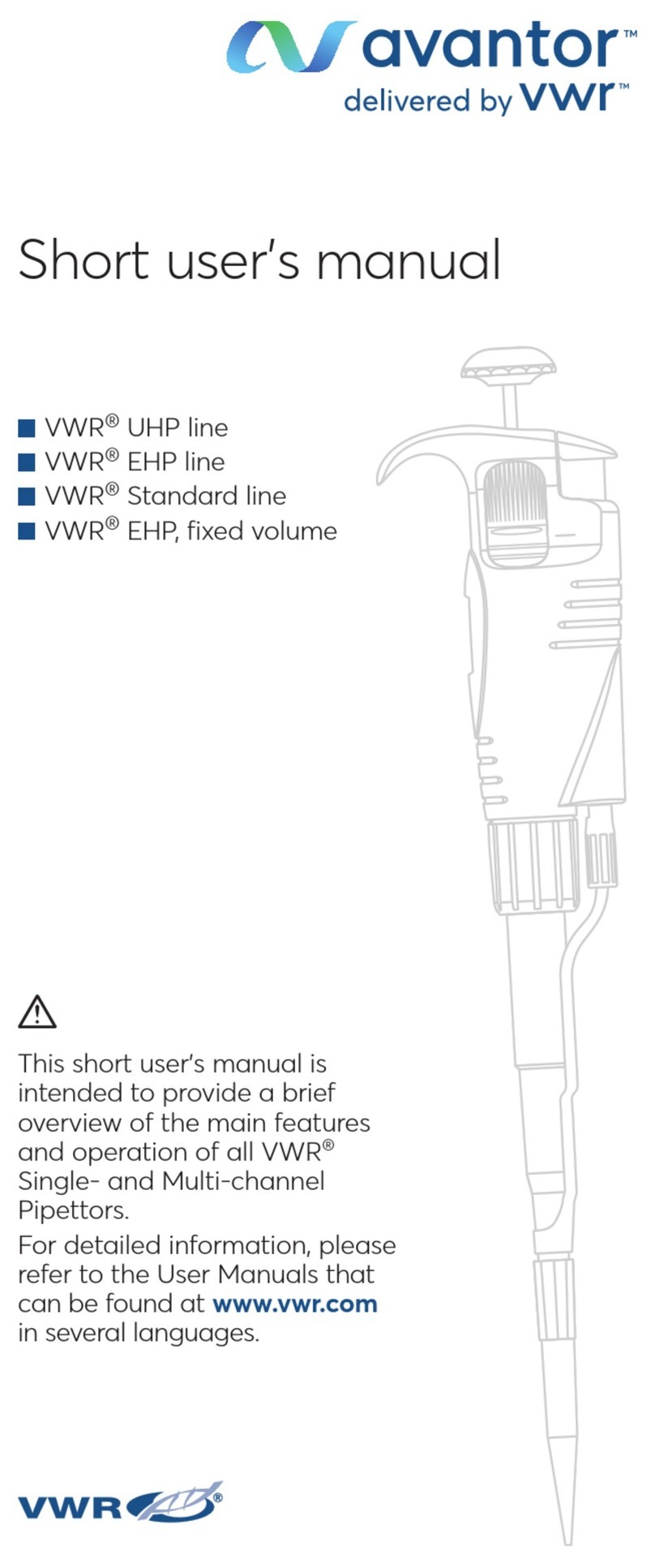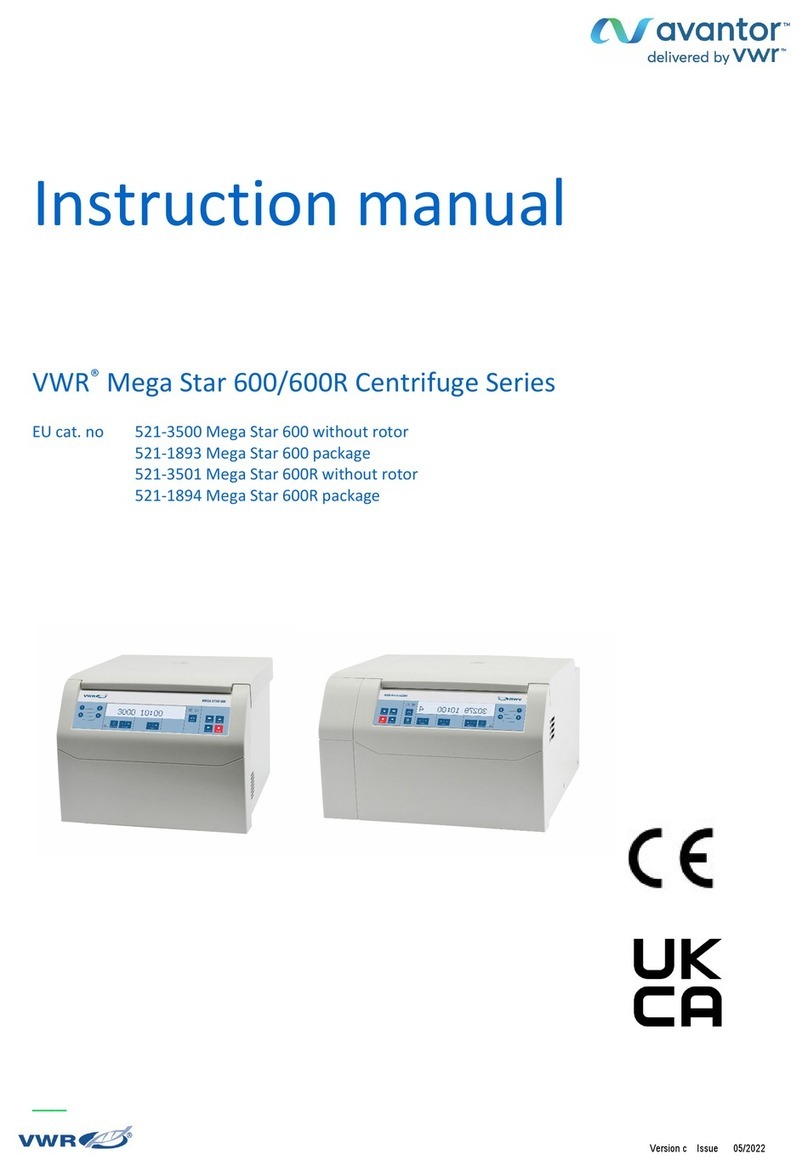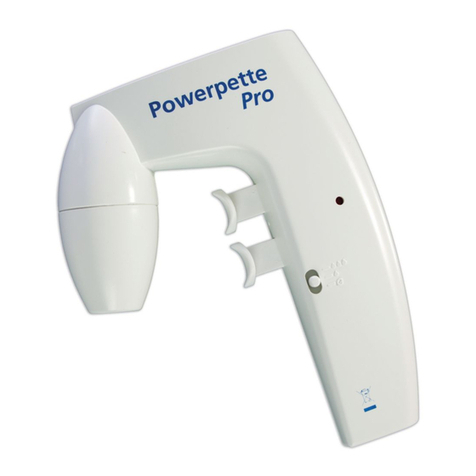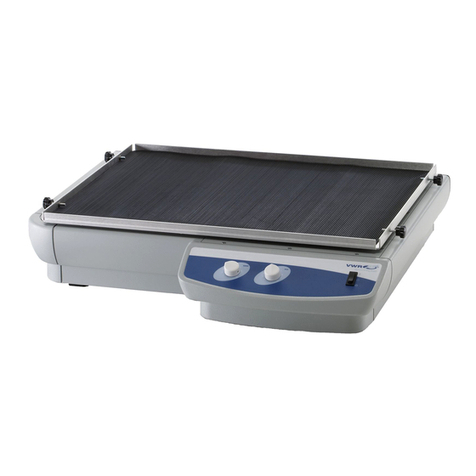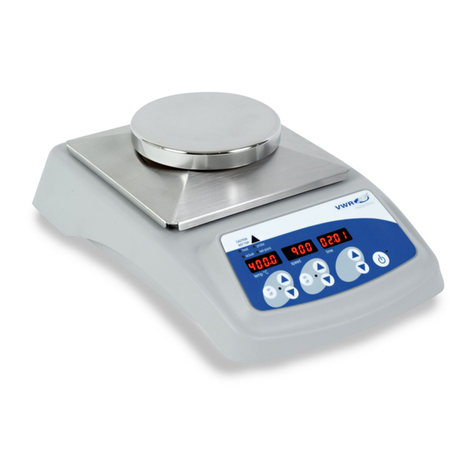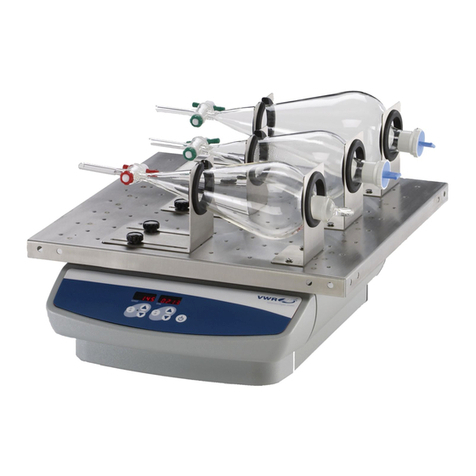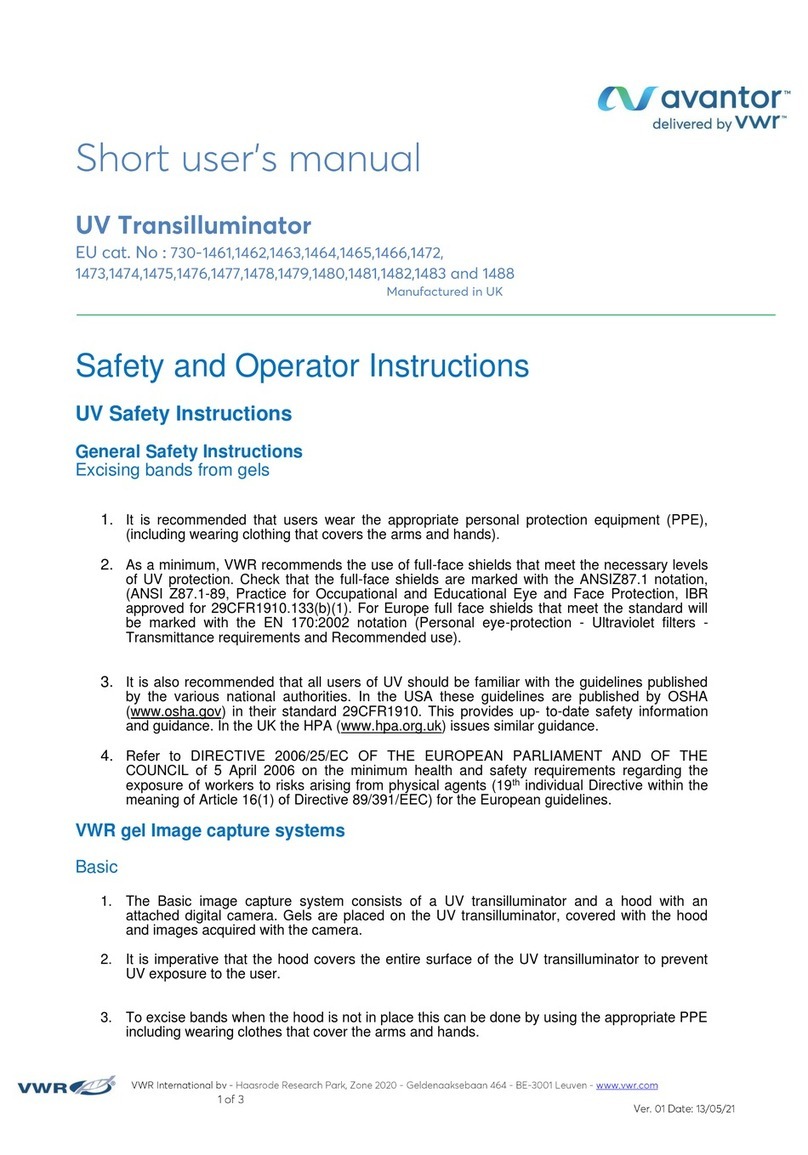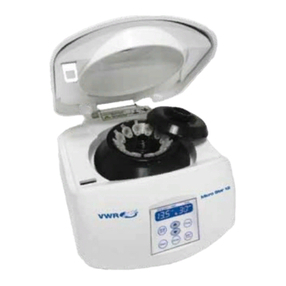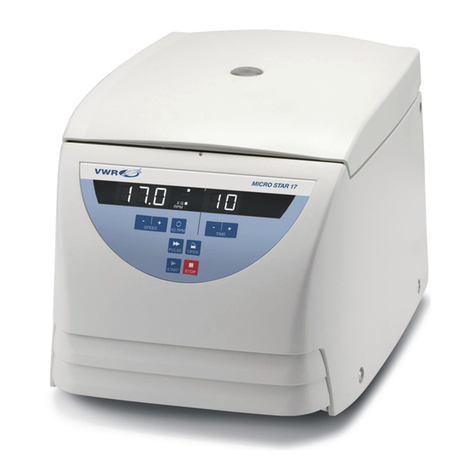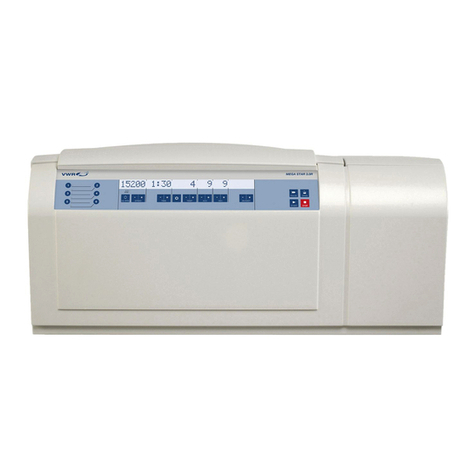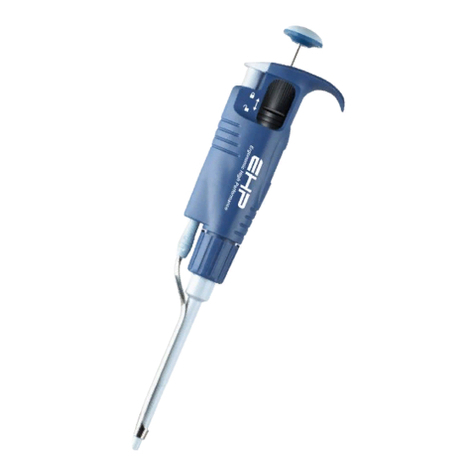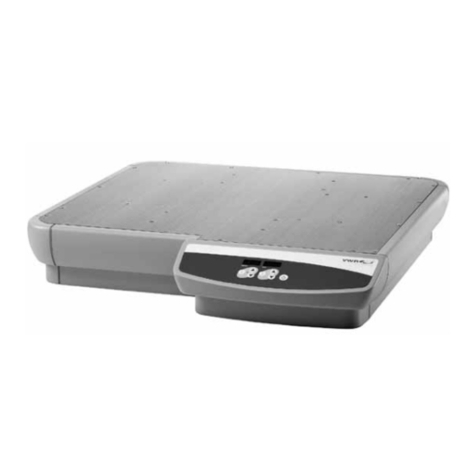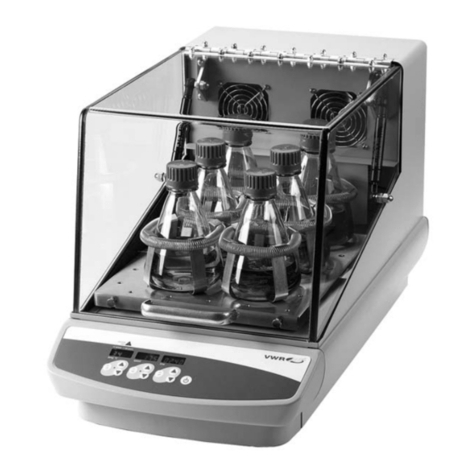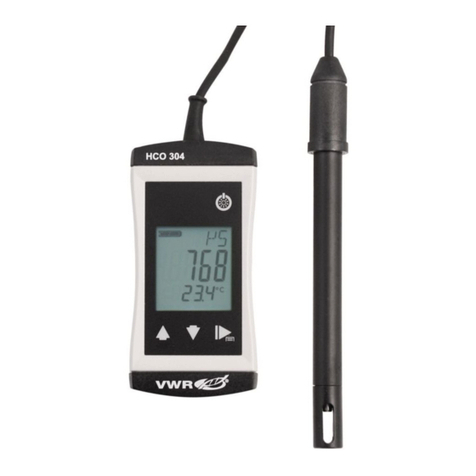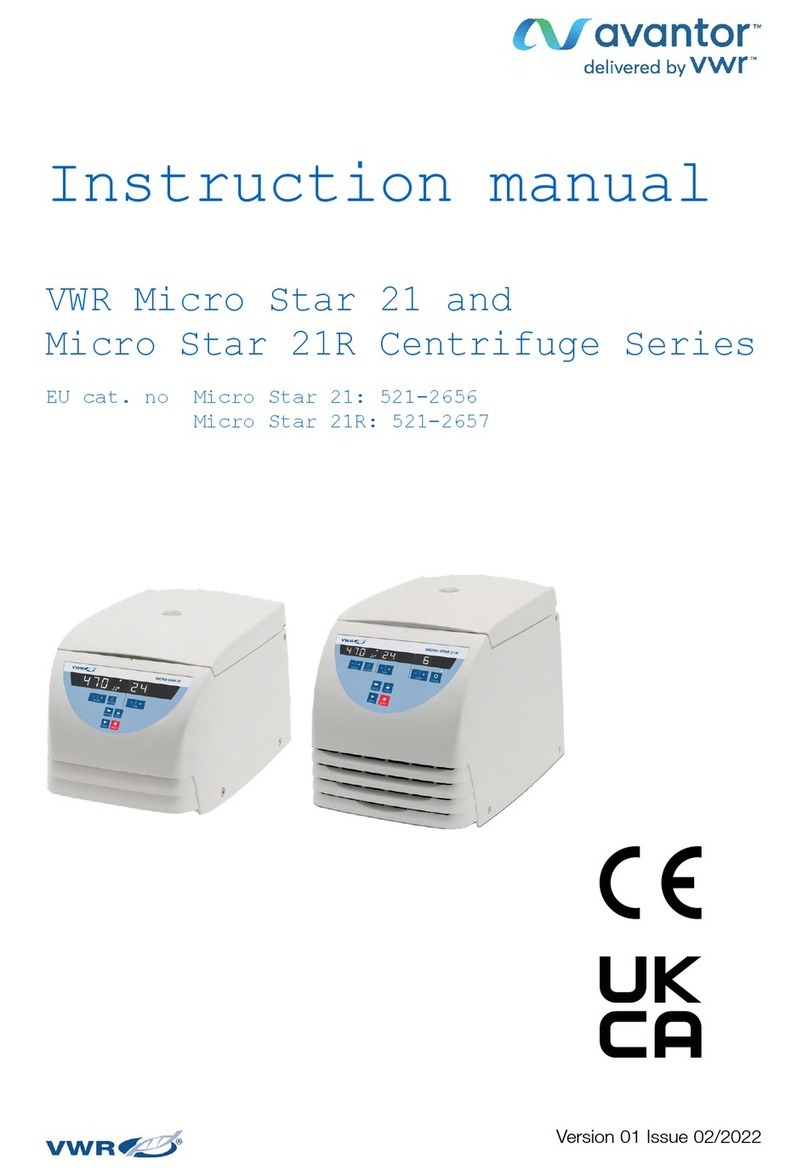
VWR Collection Manual ver 1, rev 4 28.2.2011 10
Should a spill of infectious materials occur within the rotor or chamber, the unit should be disinfected. This
should be performed by qualified personnel with proper protective equipment. Information on decontaminants,
their use, etc. are available in the Laboratory Safety Manual published by the World Health Organization.
Replacing fuses
Check the fuse when it is recommended in the Troubleshooting Guide located in this manual. The fuse holder
is located in the power inlet on the rear of the unit. Disconnect the power cord from the power inlet. Open the
fuse holder drawer by inserting a small screwdriver under the tab and prying it open. Remove the innermost
(operative) fuse from its retaining tabs and replace the fuse if necessary. A spare fuse is located in the
outermost chamber of the fuse drawer. Replace only with a fuse of exactly the same value as the original.
(Fuse type may be found in the “Specifications” section of this manual.)
Rotor maintenance
The rotor should be cleaned thoroughly after each use. Thorough cleaning must be performed when
spinning samples containing phenol or phenol chloroform. Periodically inspect the rotor for dents, dings,
scratches, discoloration and cracks. If any damage to the rotor is found, discontinue use of the rotor
immediately and replace.
Removing and Installing the angle rotor
Remove the rotor screw from the motor shaft by turning the screw counterclockwise. Lift the rotor upward and
remove from the centrifuge. Ensure that the motor shaft adapter remains on the motor shaft (Figure 1). Clean
the motor shaft and motor shaft adapter (see figure 1). Place the rotor on the motor shaft (figure 1) and over the
motor shaft adapter (see figure 1 and 2). Note: Figure 1 and 2 are located on the following page. When loading
the rotor, refer to figure 3 (located on the following page). Loading in the pattern indicated will ensure a
balanced load. Tubes to be loaded should be filled equally by eye. The difference in the weight between the
tubes should not exceed 5 grams. A partially loaded rotor may be centrifuged if the loading scheme for
balancing a rotor given in figure 3 is followed.
Overloading the rotor
The maximum load of the rotor and maximum speed has been established by the manufacturer. Do not attempt
to exceed these values. The maximum speed of the rotor has been measured for liquids having a homogeneous
density of 1.2g/ml or less. In order to centrifuge liquids with a higher density it is necessary to reduce the
speed. Failure to reduce the speed may result in damage to the rotor and centrifuge.
The revised maximum speed can be calculated with the following formula
Reduced speed (nred) x max speed
Example:
Where the density of the liquid is 1.7, the new maximum speed would be calculated as follows:
red = x 6,500 = 5,461 rpm
If in doubt concerning maximum speeds, please contact the manufacturer for assistance.
